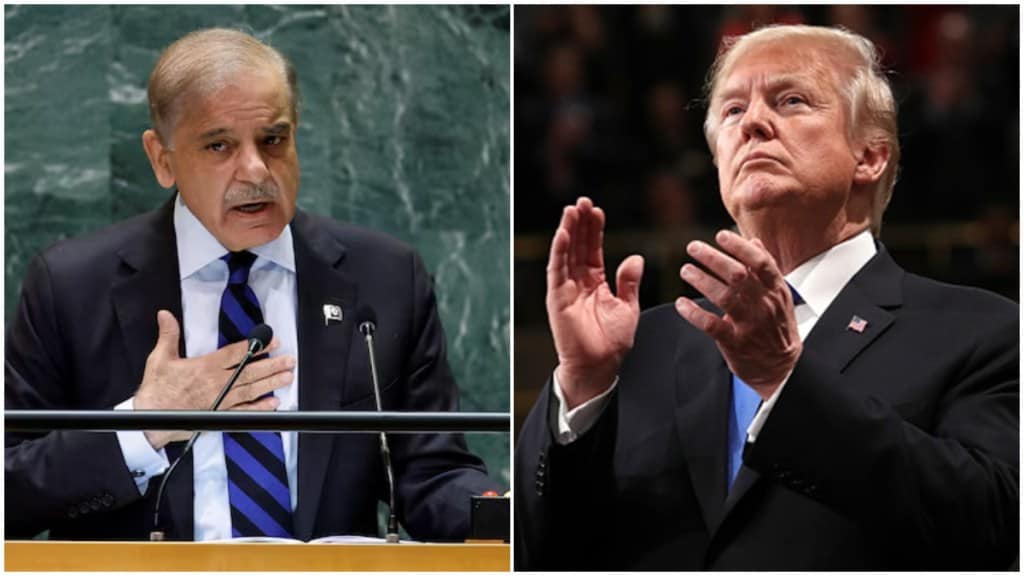Days after Pakistan’s PM Shehbaz Sharif’s visit to White House, the country is set to receive AIM-120 Advanced Medium-Range Air-to-Air Missiles (AMRAAM) from the United States. The deal will kick off a new phase in defence cooperation between the two countries. The move was confirmed in a statement by the US Department of War (DoW).
Pakistan to receive advanced AMRAAM missiles from the US
The recently modified arms contract, notified by the DoW (US Department of War), lists Pakistan as one of the confirmed buyers of the missile system. The company behind the manufacturing, Raytheon, based in Tucson, Arizona, received an additional USD 41.6 million payment on a previous contract (FA8675-23-C-0037) for the production of AMRAAM’s C8 and D3 variants, bringing the total contract value to over USD 2.51 billion.
The deal also includes other countries like the United Kingdom, Germany, Australia, Japan, Poland, Pakistan, Germany, Finland, Australia, Romania, Qatar, Oman, Korea, Greece, Switzerland, Portugal, Singapore, Netherlands, Czech Republic, Japan, Slovakia, Denmark, Canada, Belgium, Bahrain, Saudi Arabia, Italy, Norway, Spain, Kuwait, Finland, Sweden, Taiwan, Lithuania, Isreal, Bulgaria, Hungary, and Turkey,” according to the contract.
Work under this contract is scheduled to be completed by May 2030.
Potential F-16 upgrades for Pakistan
Experts, according to Express Tribune, say the inclusion of Pakistan in the AMRAAM programme could indicate upgrades to the Pakistan Air Force’s F-16 fleet. The missile is compatible only with the F-16 jets operated by the PAF. For the unversed, the AMRAAM was reportedly used in 2019 to down an Indian Air Force MiG-21 commanded by Wing Commander Abhinandan Varthaman.
The announcement came months after Pakistan’s air force chief, Zaheer Ahmed Babar, visited the US State Department earlier this year, followed by Army chief Asim Munir’s meeting with President Donald Trump in September. Furthermore, the AIM-120C8, part of the new order, is the export version of the AIM-120D, which is the most advanced AMRAAM currently in service with the US. Pakistan currently operates the older C5 variant, with around 500 missiles acquired with its Block 52 F-16s in 2010.
Capabilities of AMRAAM
According to Raytheon’s official website, the AIM-120C-8 and AIM-120D-3 are both international variants of AMRAAM primarily used in air-to-air and surface-to-air missions. These AMRAAM versions have a total of 15 upgraded circuit cards operating in their missile guidance sections. The versions also come with the capability to upgrade future software continuously.
According to the manufacturer, these missiles can be integrated into multiple fighter jets, including the F-15 Eagle, F-16 Fighting Falcon, F/A-18 Super Hornet, F-22 Raptor, Eurofighter Typhoon, JAS-39 Gripen, Tornado, and Harrier, as well as all variants of the F-35 Joint Strike Fighter.
The missile is designed to detect and strike targets at lightning speed in challenging conditions. In its surface-launch role, the AMRAAM forms the baseline weapon for NASAMS, a short- to medium-range ground-based air defence system developed by Raytheon (now RTX).
Last month, US President Donald Trump met Pakistani Prime Minister Shehbaz Sharif and Army Chief Field Marshal Asim Munir at the White House. Earlier, in June, the army chief had a one-on-one meeting with Trump at the Oval Office.
The recent warming of ties comes after a brief India-Pakistan conflict in May, which Pakistan credited Trump for helping mediate. India, however, said the ceasefire was a result of direct talks between the Directors General of Military Operations (DGMOs) of both countries.


